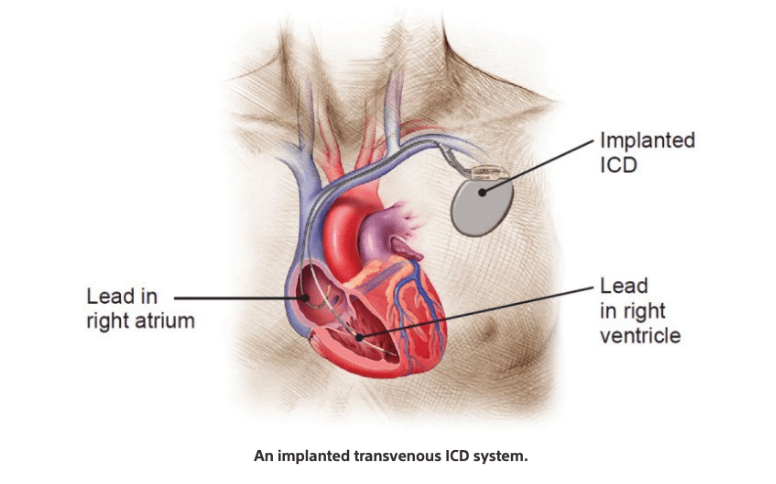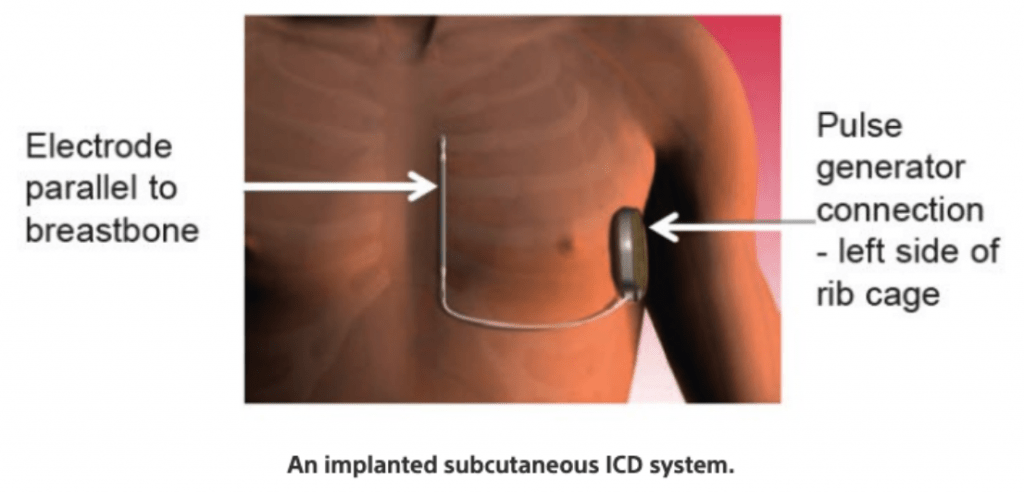About Ventricular Fibrillation
Ventricular Fibrillation (VF) is a medical emergency where normal coordinated electrical conduction is replaced by a chaotic, disorganised electrical impulse that originates from the ventricle, resulting in a loss of cardiac output, unconsciousness and potentially death. This condition may lead to “Sudden Cardiac Arrest” (SCA) due to complications associated with this heart rhythm.
Under normal circumstances, electrical impulses originate from the sino-atrial node found in the right atrium and are spread through the heart via normal electrical conduction. When a patient experiences VF, this disorganised electrical stimulus occurs in the ventricles, inhibiting the heart to pump effectively and impacting cardiac output.
This affects blood flow to the brain and other vital organs, which can result in catastrophic damage that may not be reversible, if not treated usually within minutes immediately after the event occurs. Ventricular Fibrillation is associated with very high mortality rates if not treated with Cardiopulmonary Resuscitation (CPR) or access to an Automatic External Defibrillator (AED).1
Electrocardiograph of Ventricular Fibrillation (VF)

Causes of Ventricular Fibrillation
There are several known causes of Ventricular Fibrillation:
- Coronary Artery Disease,
- Heart attack – where damage/death of the myocardium causes the irregular heartbeat that can lead to VF
- Cardiomyopathy (any cause)
- Drug toxicity (ingestion or accidental)
- Aortic stenosis
- Infection leading to sepsis
- Some inherited heart disorders such as Brugada Syndrome and Long QT
- Electrical shocks (external)
- Blunt trauma to the chest
- Excessive blood loss from any cause (hypovolaemia)3
Treatment of Ventricular Fibrillation
Ventricular fibrillation is a medical emergency that requires immediate medical attention, please call an ambulance.
All content on the Hope For Hearts site is created and published online for general information purposes only. It is not intended to be a substitute for professional medical advice and should not be relied on as health or personal advice. Please see your doctor if you have any questions or concerns.
The immediate treatment for a patient with ventricular fibrillation will be bystander cardiopulmonary resuscitation (CPR), followed by rapid access to an external defibrillator. Early defibrillation may be able to restart (synchronise) the normal conduction of the heart, restoring normal pump function of the heart. Many of the causes of VF will require immediate medical intervention and transportation to a hospital is required.4
Management to Prevent Subsequent Ventricular Fibrillation Events
For patients who have a high risk of Ventricular Fibrillation treatment may include:
- Antiarrhythmic medications that reduce the irritability of the ventricle and for the management of heart failure
- Coronary stenting to open blocked arteries
- Coronary artery bypass grafting (CABG) may be required if significant coronary artery disease is present
- Implantation of an Implantable Cardioverter-Defibrillator (ICD)
Types of Implantable Cardioverter Defibrillator
- A defibrillator is used to detect and treat life-threatening arrhythmias (such as Ventricular Fibrillation)
- Cardiac Resynchronisation Therapy promotes an increase in the hearts cardiac output by stimulating the heart together to improve the synchronisation and force of contraction if the patient is diagnosed with Cardiomyopathy
Transvenous Implantable Cardioverter Defibrillator (TV ICD)
This device has a lead (or leads) inserted via the veins leading to the right side of the heart, where these leads observe and monitor for arrhythmias (such as Ventricular Fibrillation) and can then treat immediately upon detection of these lethal arrhythmias.

What is a defibrillator and how does it work?
*All content on Hope For Hearts does not endorse or promote any brands or devices and is only intended for educational purposes. Patients should always consult individual health matters with a medical professional.
Subcutaneous Implantable Cardioverter Defibrillator (S ICD)
- Subcutaneous ICD – These devices are similar to transvenous ICD’s but the lead is placed outside of the heart, sitting above the sternum and attaching to a device that typically sits under the armpit.

Subcutaneous ICD Procedure Animation
*All content on Hope For Hearts does not endorse or promote any brands or devices and is only intended for educational purposes. Patients should always consult individual health matters with a medical professional.
These cardiac devices may also have the ability to share important information about the condition of the heart, any arrhythmias that have been detected and in some cases, early detection of heart failure whilst at home, allowing for timely intervention by a medical team.6
The capabilities of cardiac monitoring devices have grown significantly in recent years, “Innovations in software with these cardiac resynchronisation therapy devices have been astonishing.” Electrophysiologist, Dr John Hayes further discusses the advances in and capabilities of Remote Monitoring devices in the below video:
To learn more about Remote Monitoring, click here.
